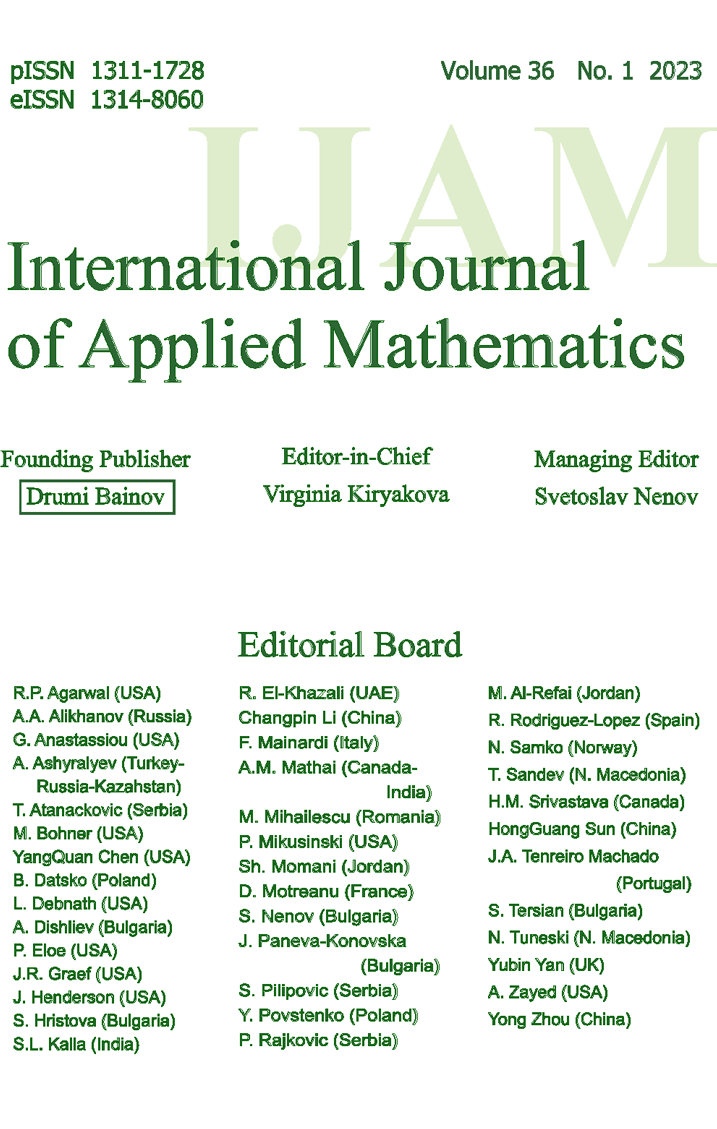IDENTIFICATION OF BURST PARAMETERS USING
NUMERICAL QUASICONFORMAL MAPPING METHODS
NUMERICAL QUASICONFORMAL MAPPING METHODS
Abstract
The complex analysis methodology (method and corresponding algorithm) for solving the problems of applied quasipotential tomography developed by us, and which assumes (for each of the respective injections) the presence of only equipotential lines (with the given distributions of local velocities or values of stream functions) and streamlines (with known potential distributions on them) at the boundary of the domain is modified. This provides sufficient openness (for various additions, generalizations, etc.), flexibility (for mathematical manipulations) and greater accuracy (because, unlike common practical applications, sections of potential application are not considered “point-like") of the corresponding algorithm. A number of numerical experiments were performed in this work.Citation details of the article
Journal: International Journal of Applied Mathematics Journal ISSN (Print): ISSN 1311-1728
Journal ISSN (Electronic): ISSN 1314-8060
Volume: 33 Issue: 5 Year: 2020 DOI: 10.12732/ijam.v33i5.11
Download Section
Download the full text of article from here.
You will need Adobe Acrobat reader. For more information and free download of the reader, please follow this link.
References
- [1] A. Adler, W.R. Lionheart, Uses and abuses of EIDORS: An extensible software base for EIT, Physiological Measurement, 27, No 5 (2006), S25- S42.
- [2] A.Ya. Bomba, M.V. Boichura, Methods of Complex Analysis in Identification Problems, National University of Water and Environmental Engineering, Rivne (2020) (in Ukrainian).
- [3] A.Ya. Bomba, M.V. Boichura, On a numerical quasiconformal mapping method for the medium parameters identification using applied quasipotential tomography, Mathematical Modeling and Computing, 4, No 1 (2017), 10-20.
- [4] A.Ya. Bomba, S.S. Kashtan, D.O. Pryhornytskyi et al., Complex Analysis Methods, National University of Water and Environmental Engineering, Rivne (2013) (in Ukrainian).
- [5] A.Ya. Bomba, L.L. Kroka, Numerical methods of quasiconformal mappings for solving problems of identifying of electrical conductivity coefficient in an applied potential tomography, Volyn Mathematical Bulletin. Applied Mathematics series, 20 (2014), 24-33 (in Ukrainian).
- [6] A.Ya. Bomba, M.T. Kuzlo, O.R. Michuta et al., One method of image reconstruction of anisotropic media using applied quasipotential tomographic data, Mathematical Modeling and Computing, 6, No 2 (2019), 211-219.
- [7] A.P. Calderon, On an inverse boundary value problem, Computational and Applied Mathematics, 25, No 2-3 (2006), 133-138.
- [8] D. Holder, Electrical Impedance Tomography. Methods, History and Applications, Institute of Physics, London (2005).
- [9] Ja. Malmivuo, R. Plonsey, Bioelectromagnetism. Principles and Applications of Bioelectric and Biomagnetic Fields, Oxford University Press, New York (1995).
- [10] P.M. Martyniuk, O.R. Michuta, O.V. Ulianchuk-Martyniuk et al., Numerical investigation of pressure head jump values on a thin inclusion in one-dimensional non-linear soil mousture transport problem, International Journal of Applied Mathematics, 31, No 4 (2018), 649-660; DOI: 10.12732/ijam.v31i4.10.
- [11] H.A. Oliveira Jr., L. Ingber, A. Petraglia et al., Stochastic Global Optimization and its Applications with Fuzzy Adaptive Simulated Annealing, Springer-Verlag, Heidelberg (2012).
- [12] Ya.S. Piekkier, K.S. Brazovskii, V.Yu. Usov et al., Electrical Impedance Tomography, Scientific and Technical Literature Publishing House, Tomsk (2004) (in Russian).
- [13] A.N. Tikhonov, V.Y. Arsenin, Solution of Ill-posed Problems, Wiley, New York (1977).

